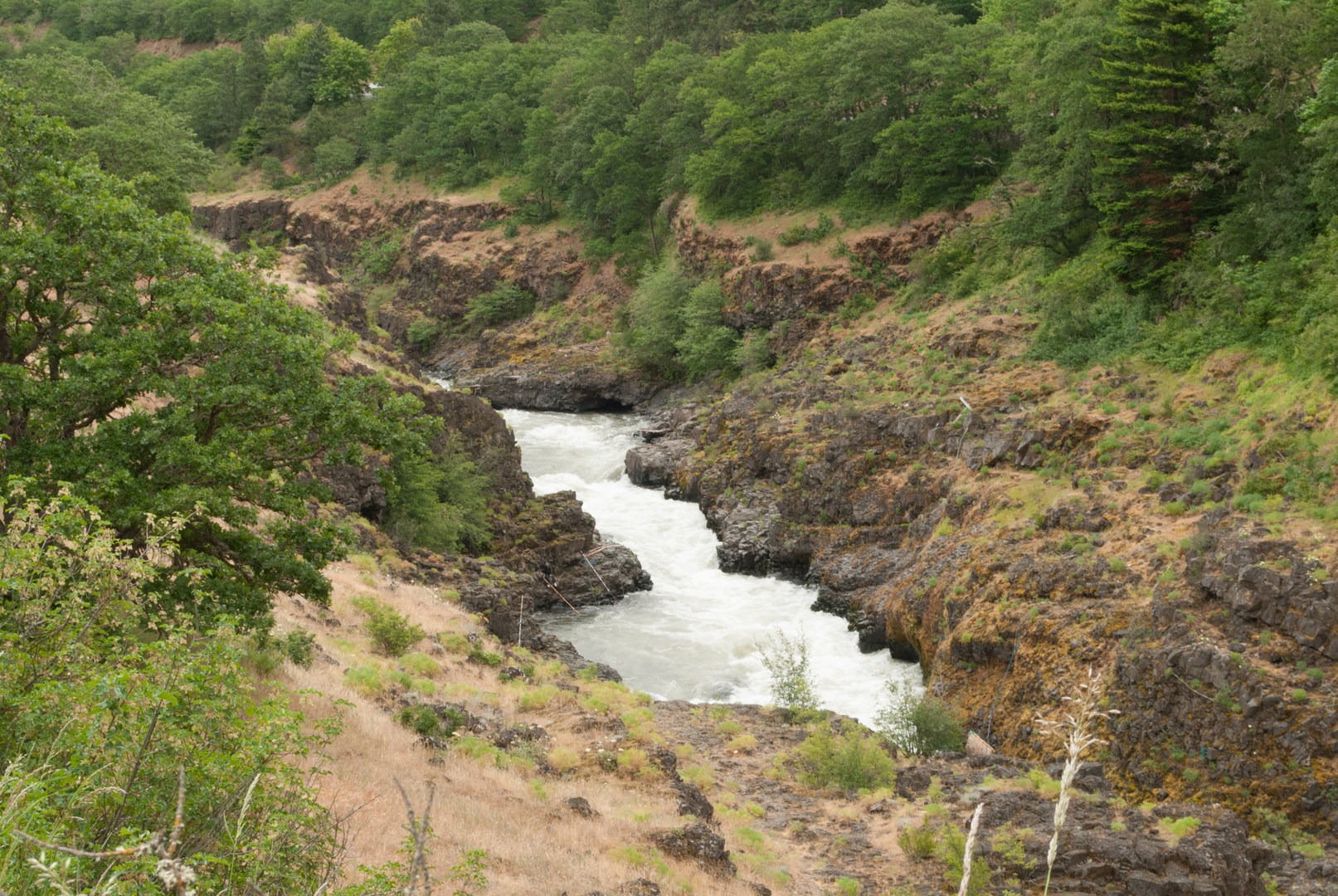In the spring when it’s still cloudy and rainy in Western Oregon and Washington, head east to the sunny and drier environment of the Eastern Columbia River Gorge, an area that looks much like the scenery in old western movies.
The Klickitat Trail is a 31-mile rails-to-trails corridor that runs along the Wild and Scenic Klickitat River. It begins where the river converges with the Columbia River in Lyle, Washington, and then heads up the isolated Swale Canyon before ending near Warwick, Washington at the Harms Road Trailhead. The section of the hike described here is known as the Lower Klickitat Trail, and it is open to hikers and bikers. Due to excessive heat in the summer, the trail is only open October through June. Bald eagles congregate here in January and February to take advantage of winter salmon runs.
In early spring, the normally brown hills become green, and colors from abundant deer brush (a shrub with many sprays of light blue to purplish flowers), Columbia desert parsley, and yellow Northwestern balsamroot lend beauty to this western canyon filled with stands of ponderosa pine, oak trees, and rocky rims. Keep an eye out for poison oak and rattlesnakes, and be prepared for ticks. Along the trail, mile markers help keep track of each mile of trail with metal signposts.
The first 1.5 miles of the trail is an old gravel road bed that runs very close to Highway 142. Fishermen’s access trails lead down to the river with great views of the canyon, but they don’t connect back to the hiking trail. Native Americans still use traditional dip net fishing methods here during salmon season, fishing from platforms perched along the rocky sides of the river.
Crossing the river, the Fisher Hill pedestrian bridge spans the Klickitat as it churns through a narrow rocky gorge. From this point on, the trail is on the opposite side of the river from the highway and is much more secluded and scenic. Pass the Lyle Falls facility where salmon put on a show attempting to jump the 8-foot waterfall in September. Continue on the trail, passing a water flow measurement raft moored on the opposite bank of the river. The canyon narrows with basalt cliffs rising on the side of the trail, and the river widens as rapids form in the fast moving water. Cross a boardwalk through a tunnel of white alders and continue to the 4-mile marker before returning the same way.



















Comments
Sign In and share them.